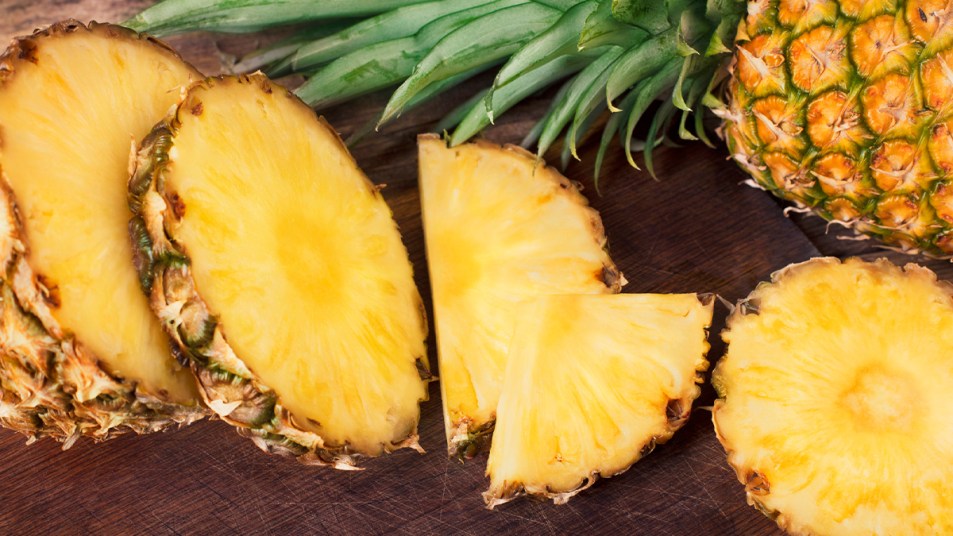How to Get Rid of That Stinging Feeling While Eating Fresh Pineapple

Pineapple makes for a tasty snack any time of the day. But after eating a few pieces, we can start to feel a stinging sensation in our mouth. Luckily, there are simple ways to prepare fresh pineapple at home so it doesn’t have that overwhelming acidic feeling.
Pineapple’s sweet yet tangy flavor and high vitamin C content (131 percent of the daily recommended intake in just one cup) make it hard to pass up at the grocery store. When it’s time to enjoy a bowl of the tropical fruit, though, the tingling sensation can be a real turn-off. According to Medical News Today, this is due to an enzyme within the pineapple called bromelain. Aside from making our mouths feel strange, bromelain can be a natural remedy for reducing inflammation and improving digestion (especially in supplement form).
However, the enzyme reacts with the mucous on your tongue as you’re chewing the fruit, causing the mouth irritation. “Because the bromelain dissolves the protective mucous that coats your tongue and the roof of your mouth, the acidity of the pineapple is particularly irritating,” explained Sarah Jampel, a recipe developer for Bon Appétit. “It’s the one-two punch of bromelain and acid that really drives the stinging sensation home.”
Although the natural enzyme and acidity may seem inevitable while eating fresh pineapple, there are some easy ways to neutralize them so you can still enjoy this tasty fruit with the bite.
How to Eat Pineapple Without Stinging Your Mouth
One way to prevent this feeling is to soak your pineapple in a salty brine. Michael Tunick, PhD, shared with Eating Well that this works because salt activates the bromelain and weakens the enzyme’s tingly effect before you eat it.
To do this, simply mix one cup of water to one teaspoon of salt in a bowl until the salt has dissolved. Keep this ratio in mind if you have a lot of pineapple and need more salt water to fully submerge the fruit. Add the fresh pineapple chunks to the brine and let them sit for just about a minute before scooping them into a separate bowl for serving. Don’t rinse the fruit afterwards as it’ll get rid of the salt barrier which blocks the acidity from causing irritation. The brine leaves the fruit with a salty but sweet taste, so if that’s your favorite flavor combo this is the perfect solution for you.
But if salted pineapple sounds strange or too time consuming, senior food editor of Lifehacker Claire Lower has a few other easy ways to prepare it to get rid of the sting. First, when you’re cutting the pineapple, she suggests making sure that you remove the core. This sounds like an obvious step, but this part of the fruit has the highest concentration of bromelain. Removing it prevents any of the excess enzyme from getting to the rest of the pineapple as you’re slicing it and should save you from feeling any uncomfortable tongue or mouth irritation.
If you’re a fan of Hawaiian pizza, you’re in luck because another way she recommends taming the bromelain is by cooking the pineapple. This deactivates the enzyme and brings out the fruit’s natural sweetness. Beyond a pizza topping, it’s a super versatile fruit to either grill, roast, or bake in a cake — there’s no shortage of ways to prepare it!
Cooked pineapple not your thing? Lower notes that pairing the fruit with a dairy product like yogurt or cottage cheese gives the bromelain another protein to cling onto. This also prevents it from directly coming in contact with your tongue and soothes your palate as you’re eating. Not to mention, it’s makes for a healthy snack to satisfy your appetite.
With these different options for preparing pineapple, you can really savor the fruit’s sweetness and vibrant flavor without any stinging!












